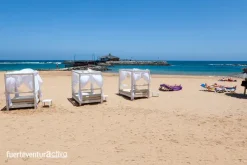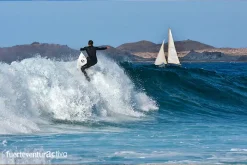What to see in Fuerteventura ?
El Jablito
Wake up by the sea, feeling the first rays of sun through the glass of the windows, listening to the squawking of the seagulls. In short, feeling that time does not pass is one of the sensations that you can experience in El Jablito.
El Jablito is one of those enclaves that you don’t expect to find on an island as touristy as Fuerteventura.
Here you come, above all, to disconnect, to contemplate how the fishermen’s boats are rocked, to bathe and enjoy its cove, and why not, to discover one of the most unique hermitages of Fuerteventura, dedicated to the Virgin of la Caridad del Cobre
For those who do not know it, El Jablito is a small fishing settlement in the northern municipality of La Oliva, located in front of Montaña Roja and Parque Holandés.
History of El Jablito
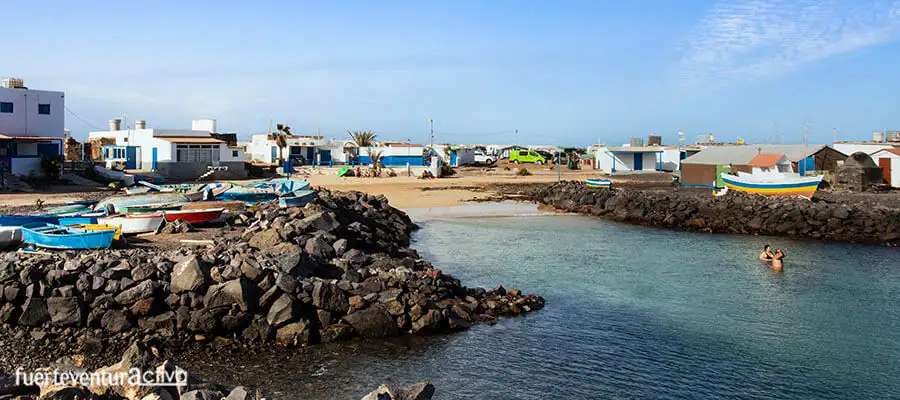
The El Jablito area, due to its location and because it has a cove sheltered from the prevailing winds, has always been a good place for fishing and shellfish. Some researchers assert that it was, in pre-Hispanic times, a temporary settlement place for the Mahos. There are vestiges of shells in its vicinity with abundant remains of malacofauna.
After the conquest and the Castilian colonization, on the beach of El Jablito, the fishermen anchored their boats. Little by little a colony was created consisting of a handful of huts. Once the fishermen were established, at the end of the 18th century, their seasonal transhumance began. They used to stay in this part of the coast during the summer.
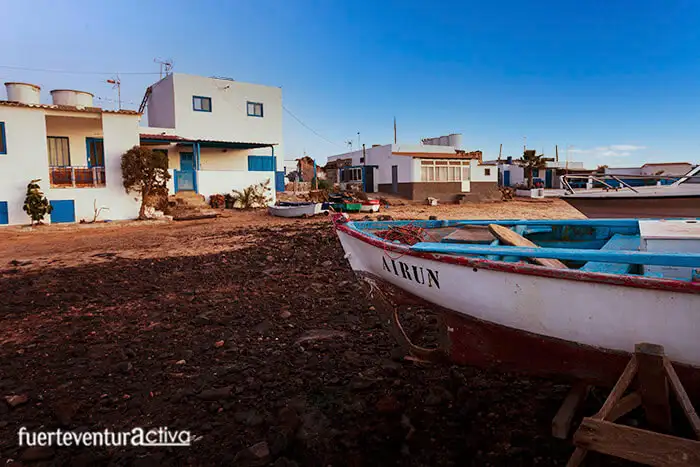
The families moved from their places of residence to El Jablito, including the elderly. The journey was made by boat from any other port on the island, or by land, supported by camels and donkeys that carried the household goods.
The port of El Jablito served as a pier for limestone and various goods for centuries. In the 30s of the 20th century it was a military settlement.
The first houses were built with stones, some of them still remain. They were known by the surname of their inhabitants: the Chinchas, the Guerra, the González, Andresito …
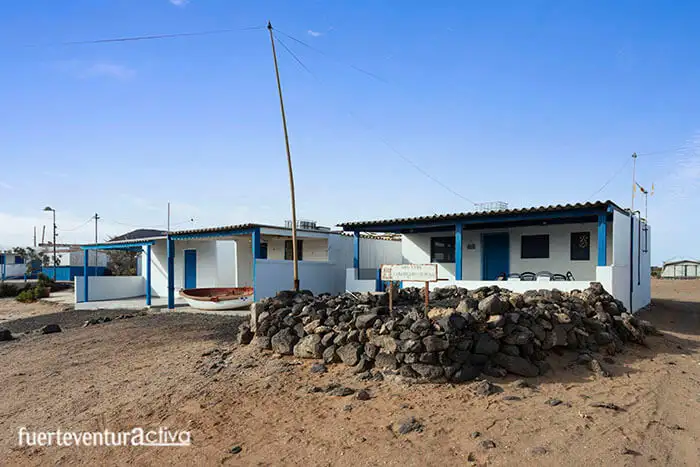
With the tourist boom, in the second half of the 20th century, the quiet Jablito was the object of speculation, with the project of the construction of several tourist urbanizations in its surroundings and even an ambitious marina with capacity for 400 boats, which would be called “Puerto Ventura”.
The newspapers of the time announced it, with great fanfare, as the “largest tourist project to be built in the Canary Islands.” It would have two luxury hotels with 420 rooms each, 30 restaurants, a water park, and more than 1000 different apartments, all 4-star category. In total it would have 7,000 accommodation places.
The construction of these mega urbanizations would employ 2,000 people. But the German promoter and businessman Werner Bleiker, came face to face with the obstinacy of the Majoreros, who wanted their humble fishing village to remain as it was. The fight between David and Goliath was reproduced, once again, in Fuerteventura, and although the tourist project was never carried out, the inhabitants of El Jablito cannot be calm. Every few years new speculative projects arise that stoke the fears of yesteryear, the last time was in 2018, with another project of the same nature, which would be called Costa Ventura. Nor has it been done.
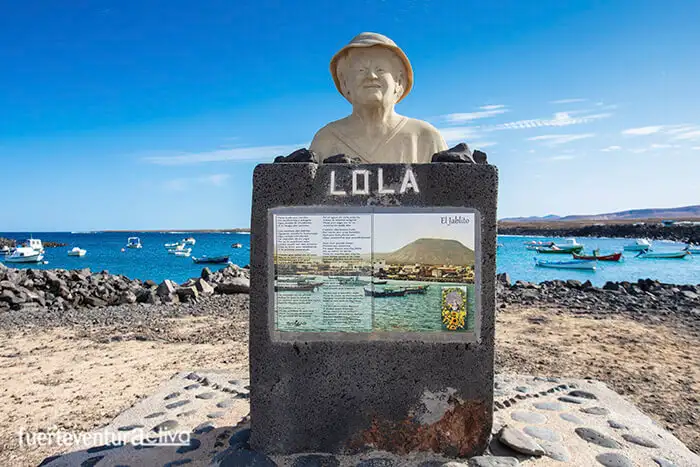
On a walk through the sandy streets of El Jablito you will see remains of one of the first houses, belonging to the Chinchas built in 1780, a Canarian ball court, a playground, spaces for the recreation of the neighbors, a beach bar and an oven traditional included, and an emotional sculpture dedicated to Lola, a very dear neighbor, who passed away a few years ago.
Hermitage of the Virgen de la Caridad del Cobre
An artisanal fishing boat, painted in the colors of the Canarian flag and beached on land, to the west of the cove, houses the small sanctuary in honor of the Virgen de la Caridad del Cobre.
The most curious thing that you will observe in the maritime temple are its small shrines, made with shells.
It may be strange that a virgin directly related to Cuba, the Yoruba religion and other Afro-Cuban religions, has her devotees on our island.
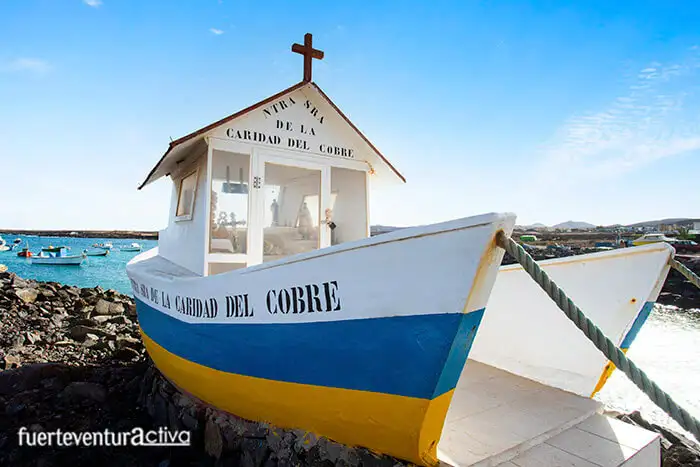
The devotion to the Virgen de la Caridad del Cobre was imported by those returned Canaries who emigrated, at the beginning of the 20th century, to Cuba.
The Virgin of Charity of Copper or Oshum, according to the Yoruba religion is the queen of the fresh waters of the world, personifies love and fertility.
By the way, the hermitage of the town of Los Alares, in the municipality of Antigua, is also dedicated to the Virgen del Cobre.
On August the 15th, the patron saint festivities of El Jablito are celebrated. That day there is a maritime-land procession through the town.
The Virgin is taken out of her chapel by the neighbors, carried in her litter decorated with bouquets of yellow flowers, and carried to the sands of the beach. There she is embarked in a decorated boat to be taken along the coast of the town.
Fuerteventura1



